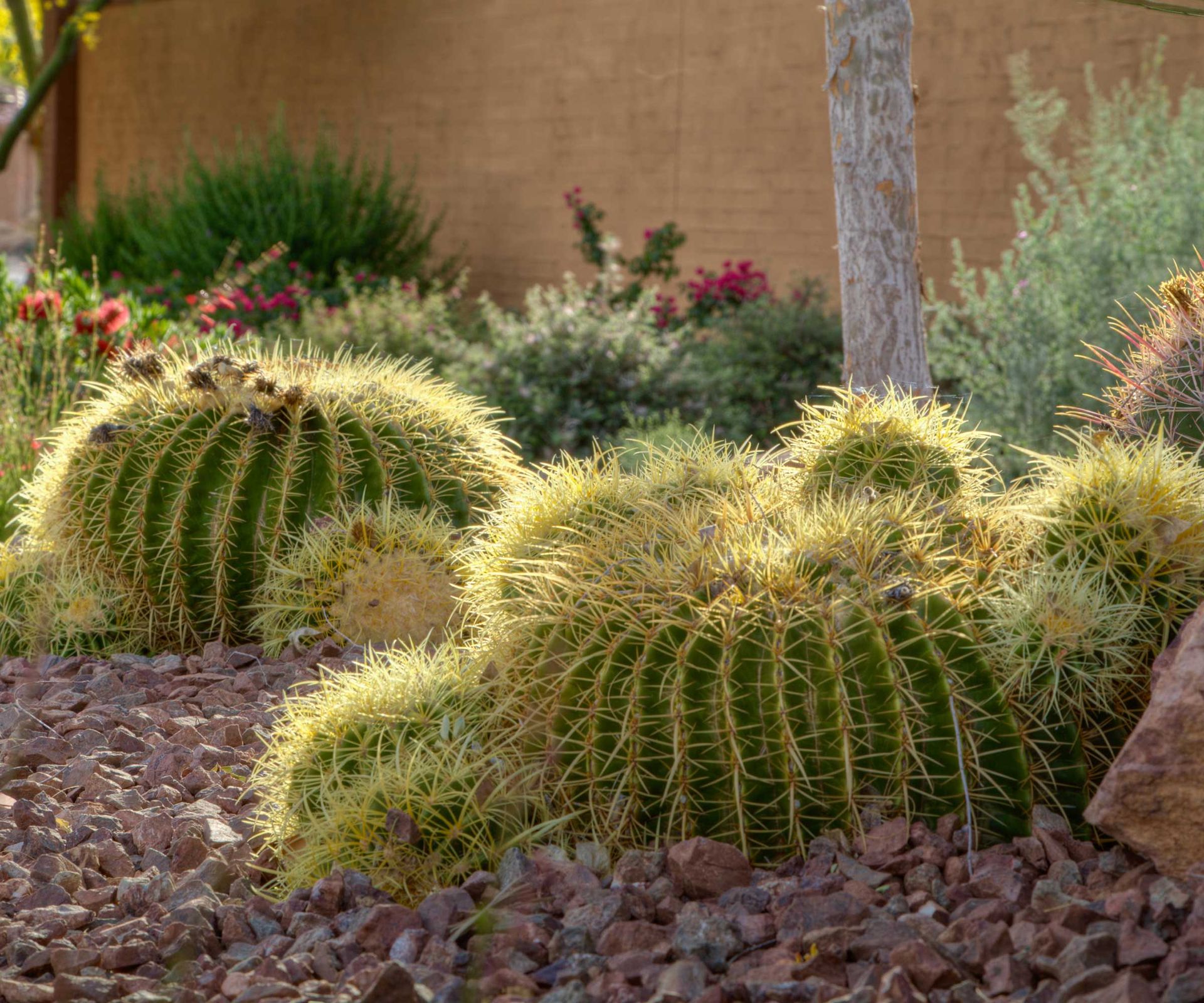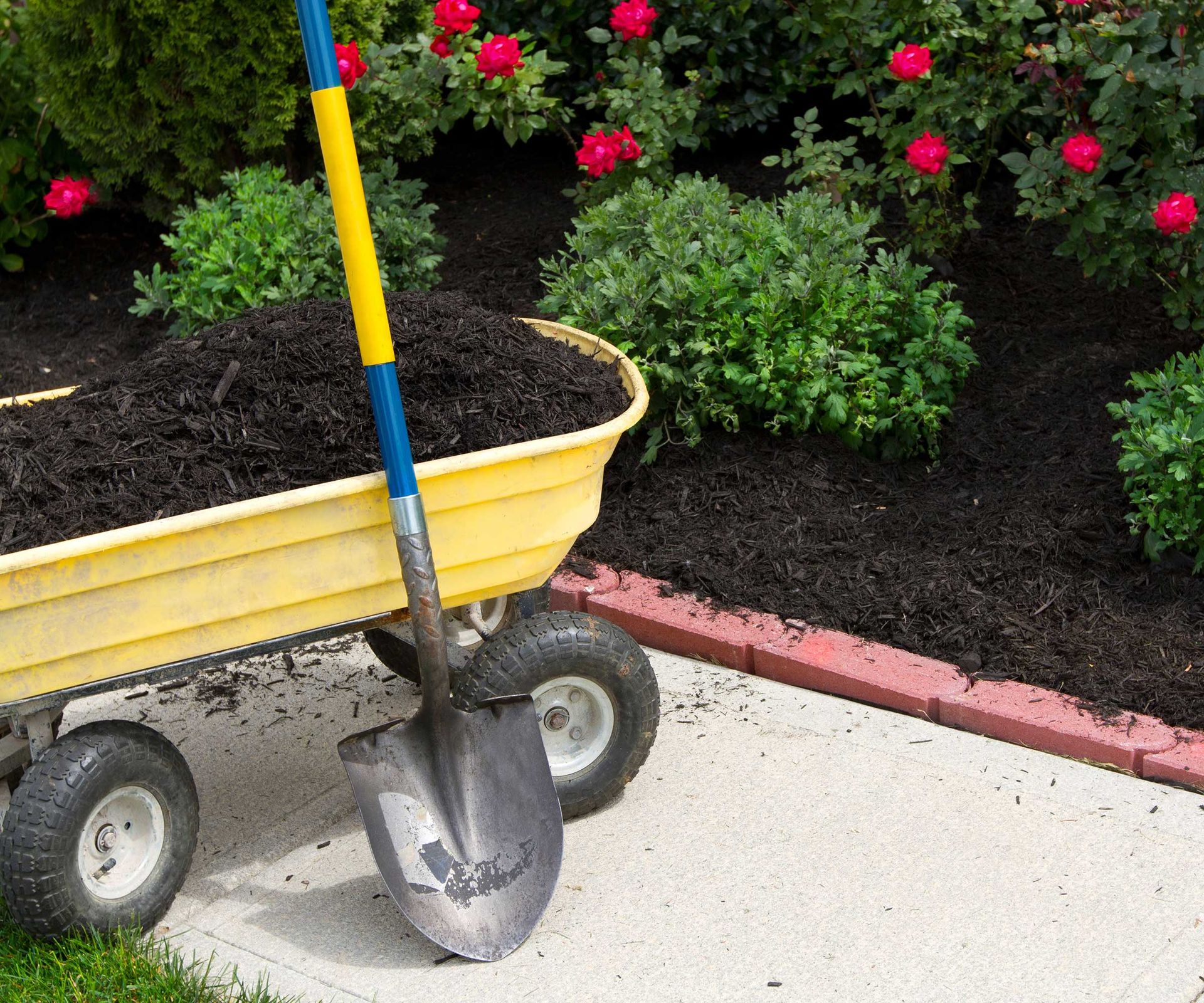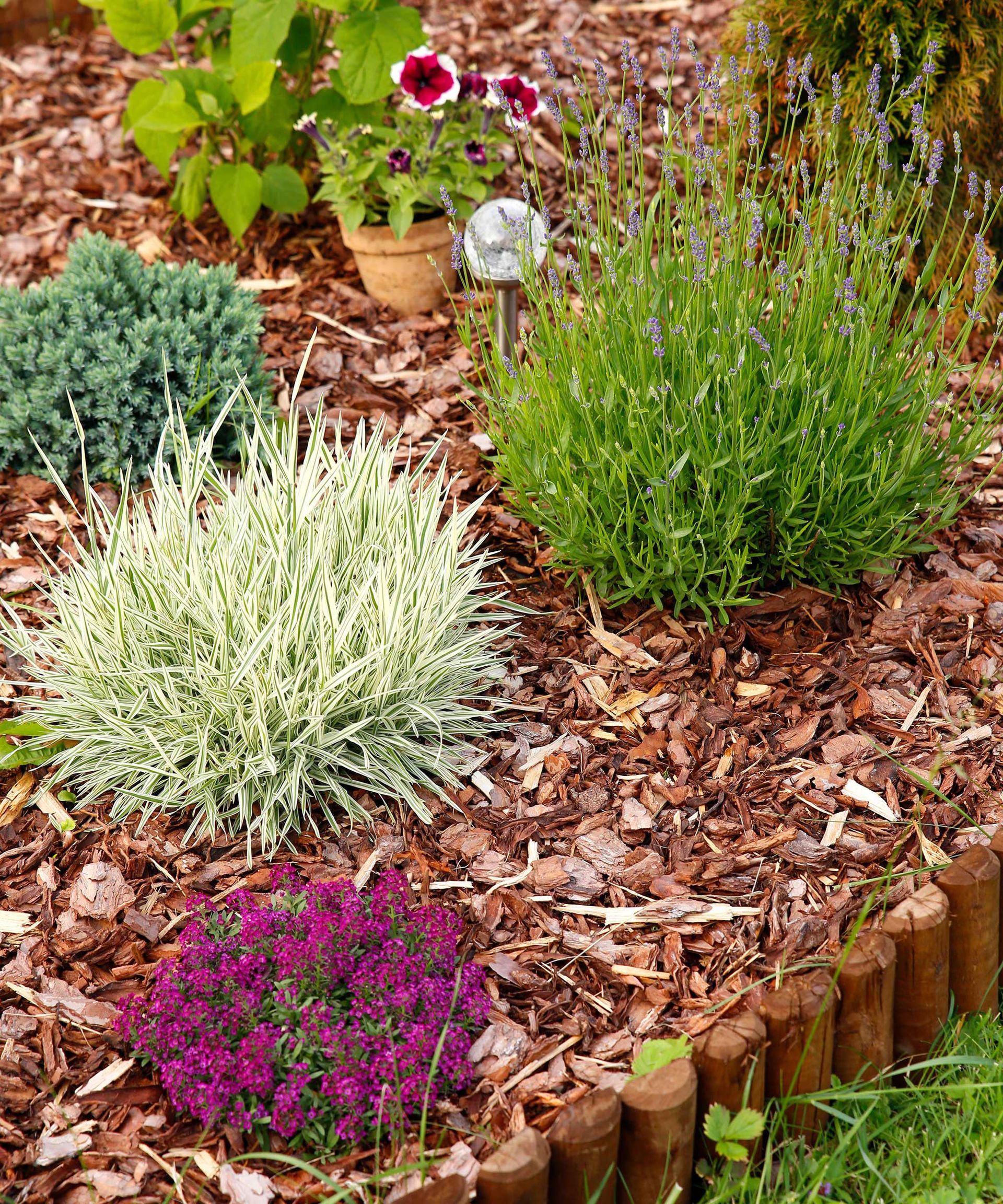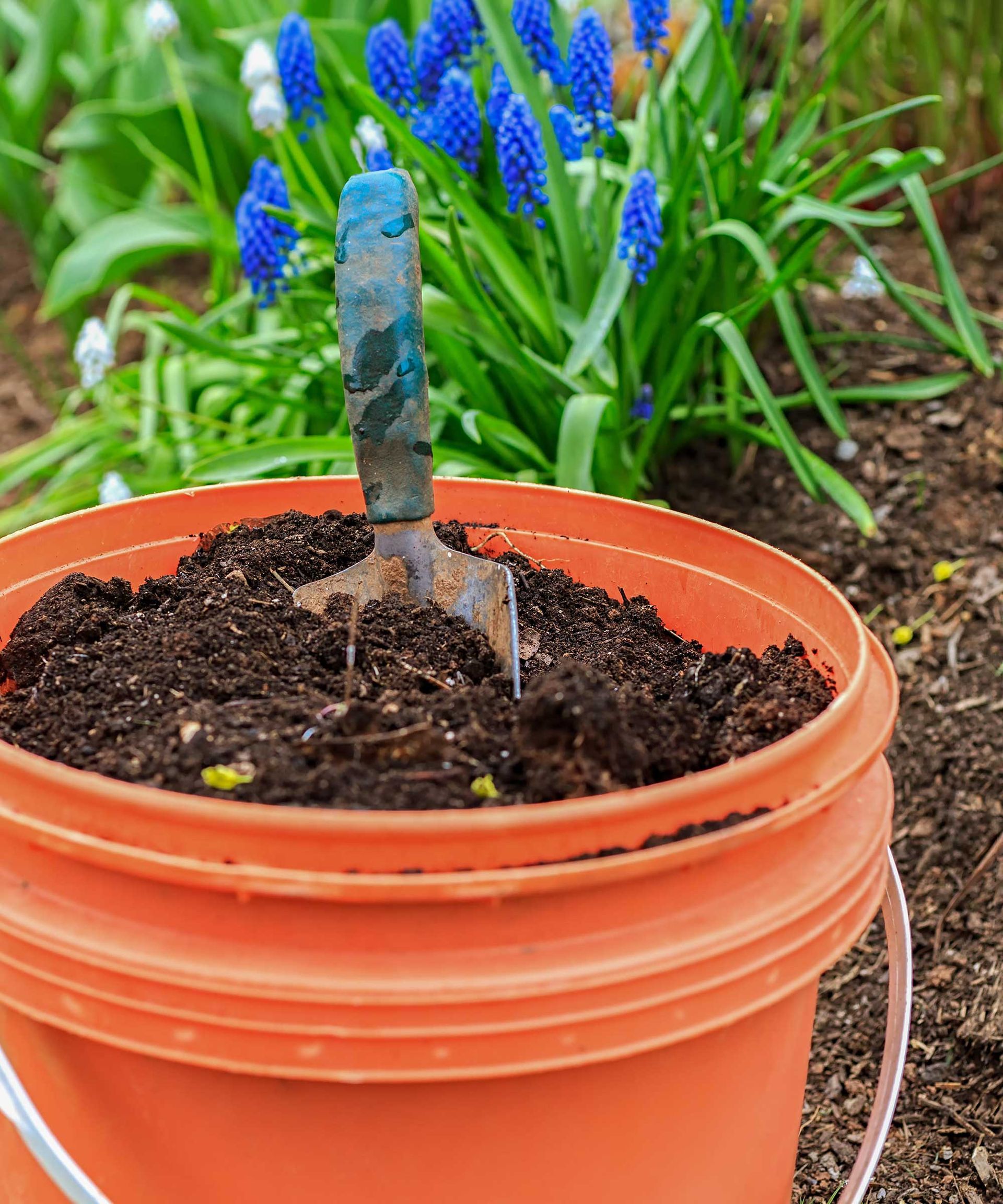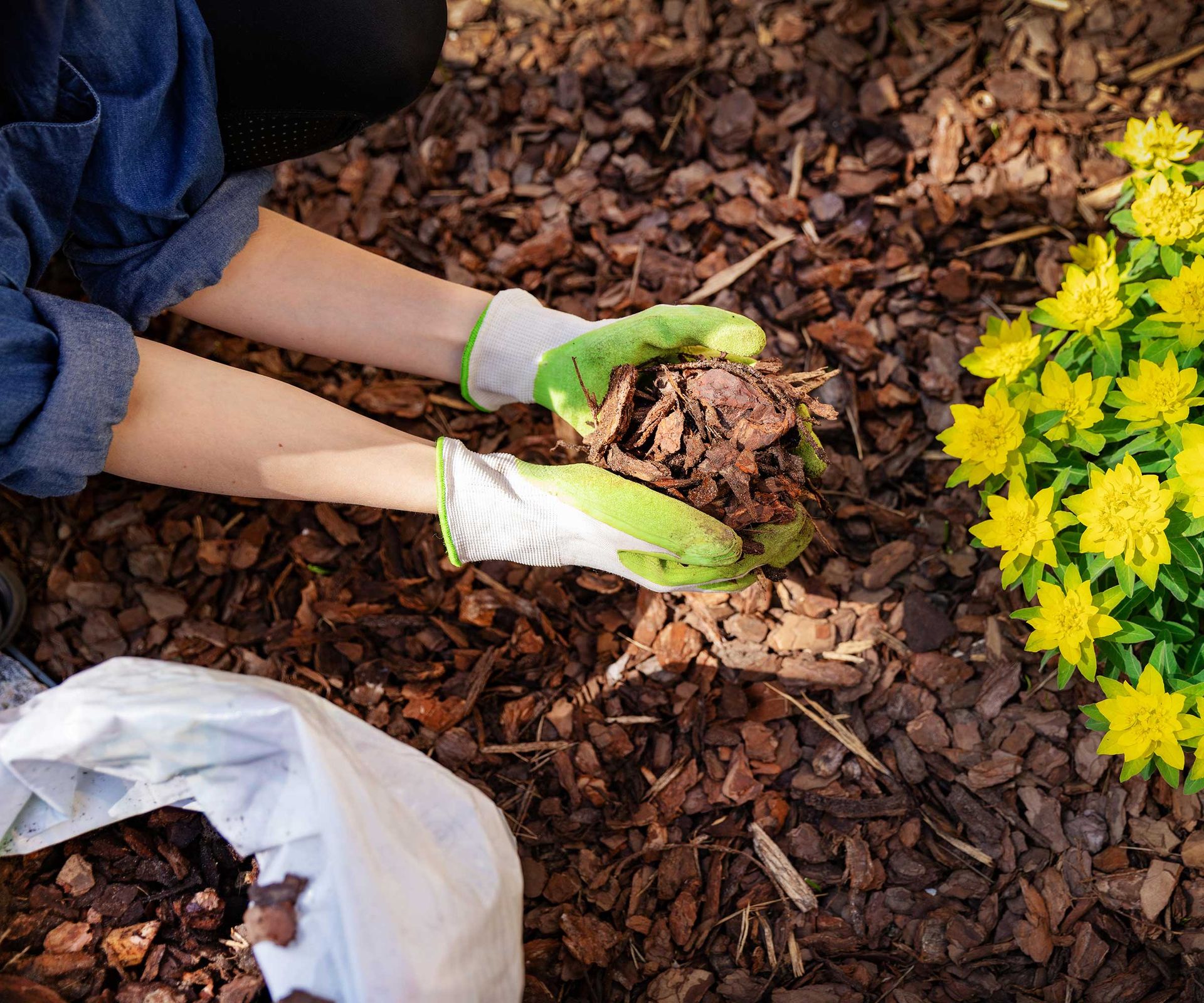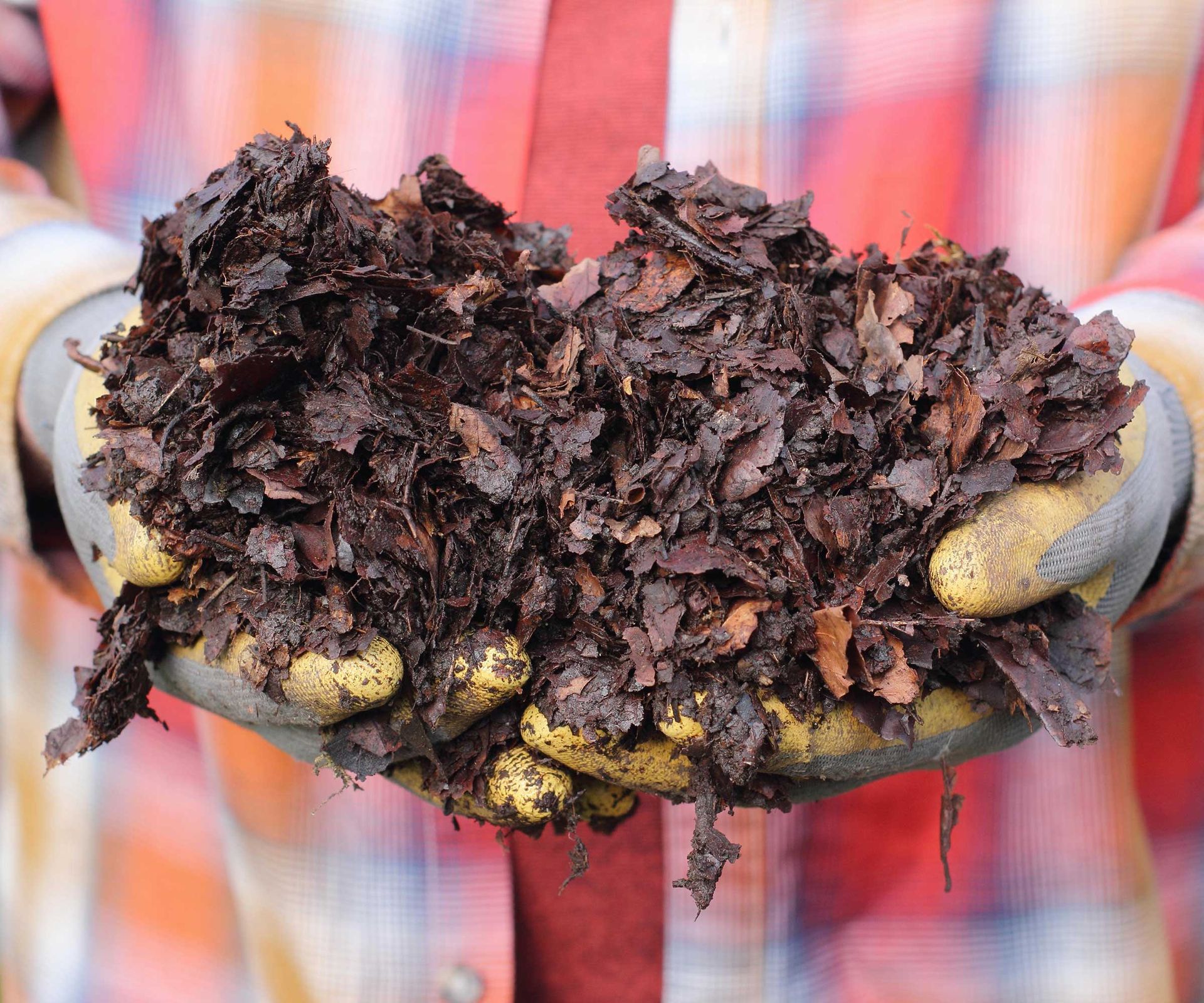a simple guide to help your garden thrive |
If you’re relatively new to gardening, you could have listened to the time period ‘mulching’ thrown about here and there. If it truly is still left you perplexed, never be. It really is truly a tremendous basic thought and quick to do at house – and as a end result, you can be rewarded with more healthy crops and much less out of doors maintenance to do overall.
To place it basically, a mulch is a layer of content that you place all around your yard vegetation, on the incredibly prime of the soil. This can array from do-it-yourself compost to leaf mildew, gravel, and extra, and all have their rewards.
To get the most out of your mulching, there are some helpful pointers to bear in brain, like when and how to do it. We have place collectively every little thing you need to have to know to get started off, with plenty of suggestions from the specialists.

As a previous gardener, Holly often topped recently planted flower beds with a generous layer of bark chippings – a mulch that not only seems to be wonderful but gains the soil, also, as it decomposes. And, on her allotment, she utilized a blend of landscaping cloth topped with bark chippings to maintain weeds out of pathways. For her, it really is a game-changer for trying to keep servicing time down.
What are the diverse styles of yard mulch?
Broadly, there are two unique forms of mulch: biodegradable and non-biodegradable.
Biodegradable (usually identified as natural) mulches decompose more than time. Aaron Eco-friendly, Founder of Vital Property And Garden (opens in new tab), lists compost, grass clippings, shredded leaves, and bark as illustrations. It truly is effortless to unfold, and has the gain of improving upon the soil as it breaks down. ‘However, this kind of mulch does will need to be changed every couple decades,’ he claims.
Non-biodegradable (or inorganic) mulches don’t crack down: believe gravel, available on Amazon (opens in new tab), and pebbles. Landscaping fabric (also obtainable on Amazon (opens in new tab)) is a different non-biodegradable possibility and a popular decision for kitchen area gardens. They are a much more minimal-routine maintenance selection, nevertheless, they will not likely insert nutrition to the soil. Additionally, stones can be a inconvenience to shift and change if you want to plant new flowers and shrubs, Aaron warns. ‘Choose organic and natural mulch if you see your self needing to dig up the soil and go mulch all around, and choose inorganic mulch if you just want to set it and fail to remember it.’
Gravel is a very good mulch for dry gardens
(Impression credit rating: David Winger/Alamy Stock Image)
What are the benefits of mulching?
Mulching is effective for extra motives than one particular.
Suppressing weeds:
A single of the major rewards of mulching your plants is that it slows down the have to have to get rid of weeds, as it blocks out the daylight they need to have to improve. As Deborah Niemann, the operator of Thrifty Homesteader (opens in new tab) states, ‘Even although some persons chat about weeding as if it can be wonderful zen time, it gets outdated quick! I certainly adore mulch because it cuts down weeding time down to virtually zero.’
Retaining moisture:
Mulching keeps water from evaporating from the soil far too swiftly, which suggests you would not want to drinking water plants as often, Deborah suggests. This is specifically handy if you expect durations of drought. ‘When you won’t be able to count on Mother Nature to drinking water your backyard garden, you suddenly understand how substantially water it seriously requires. So, blocking drinking water from evaporating becomes truly essential.’
Improving upon your soil:
As talked about, biodegradable mulches crack down. Some styles, especially leaf mould and home made compost, will strengthen the nutrient content material of your yard soil as they do so. They will also gain the structure of the soil, by strengthening aeration and drainage.
A compost mulch will break down about time, improving upon the fertility and composition of the soil
(Impression credit: Ozgur Coskun/Alamy Stock Image)
Delivering winter safety:
Imagine of mulch as a blanket that safeguards your plants against inclement winter weather. ‘The most critical task to accomplish likely into the wintertime is to have the vegetation very well mulched with compost, wooden chips, salt hay or a very similar organic and natural biodegradable product,’ says Chris Kemp, an arborist, plant health care expert, and Supervisor of the Plant Healthcare and Treecare divisions at Piscataqua Landscaping & Tree Services (opens in new tab) in Eliot, Maine.
‘This layer will guard the roots of your vegetation all through cold snaps and dry spells by moderating soil temperatures and holding dampness close to the roots,’ he suggests. If you increase dahlias and live someplace with relatively gentle winters, a layer of protective mulch can substitute getting to carry and retailer the tubers right up until warmer weather comes.
Upping aesthetic attraction:
Final, but not minimum, mulching can enhance the over-all seem of your borders. Bark chippings and gravel can give them a much a lot more orderly overall look in distinction to bare soil, for occasion.
Bark chippings include to the aesthetic charm of yard borders
(Image credit: FotoHelin/Alamy Stock Photo)
How to mulch
Mulching is a ought to for a very low-upkeep border – simply just address the entire mattress. But, you can also implement mulch around particular person plants. If the latter, intention to lengthen the mulch to match the diameter of the plant. Try to take away all weeds before you implement it, as very well as watering the area if it is really dry: that way, it will lock in the moisture. ‘Keep it off the crown as it may well gather moisture when it rains, which can trigger the crown to rot,’ states John Negus, a gardening skilled from Beginner Gardening journal.
If you’re employing landscaping fabric above a flower bed, you you should not essentially have to have to clear away weeds from the soil 1st, as it will swiftly smother them. Merely slice crosses in the cloth to plant through. You can then best the material with mulch for a additional aesthetically-satisfying finish.
Mulch your borders as soon as or 2 times a calendar year
(Picture credit history: Island Photos/Alamy Stock Picture)
How thick should really a layer of mulch be?
‘When laying down mulch [aside from landscaping fabric], put down a layer two-to-a few inches thick. Any thinner and you won’t be having the whole added benefits of the mulch, but any thicker and it could participate in host to unsafe pests,’ says Aaron Inexperienced.
Really don’t spread your mulch also thinly
(Picture credit rating: ronstik/Alamy Stock Photo)
When should really you mulch your borders?
You can mulch at any time of year, but most gardeners treat it as a late spring or early slide task, or the two, based on no matter whether it wants a leading-up.
Mulching at the commencing of the gardening season can suffocate the newborn weeds ahead of they have a opportunity, states Deborah.
Mulch applied in slide will supply that all-vital winter security. Implement it right before the soil hardens with frost, advises John Negus. ‘Additionally, worms, which are however energetic now as the soil has retained some heat from the summer time sunlight, will integrate the mulch into the soil and enhance its effective humus reserves,’ he adds.
Set fallen leaves in your yard to good use by creating leaf mold
(Picture credit rating: Deborah Vernon/Alamy Stock Photo)
Avoiding issues with mulching
- Observe out for pests: Mulch can often attract pests, especially slugs and snails. Be vigilant, and if you spot them, use a natural slug handle process, these types of as a beer entice.
- Go away a gap all-around the stems of woody plants: If you do not, the mulch can induce them to weaken and rot.
- Maintain it tidy: ‘A freshly mulched mattress or border is irresistible to birds. It is a smooth spot for them to poke all-around in and uncover juicy grubs and other delectable foods,’ claims John. ‘Apart from raking the mulch back onto the back garden, all you can do is erect a mini fence all over the web-site so that the material stays on the soil.’ Luckily for us, there are a lot of elegant backyard edging concepts to pick from.
